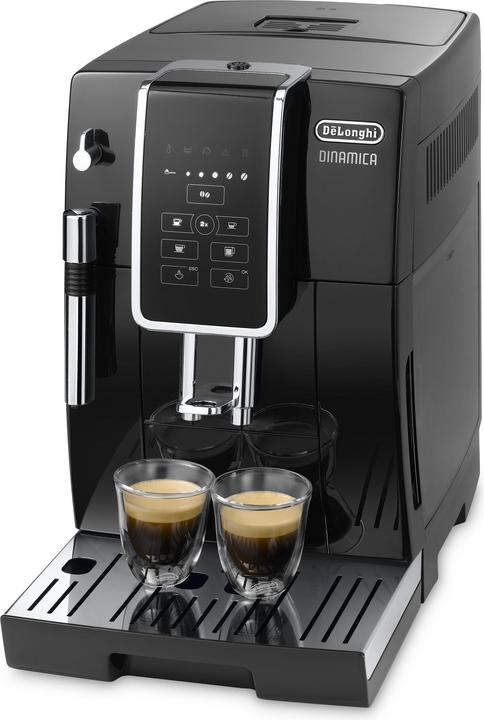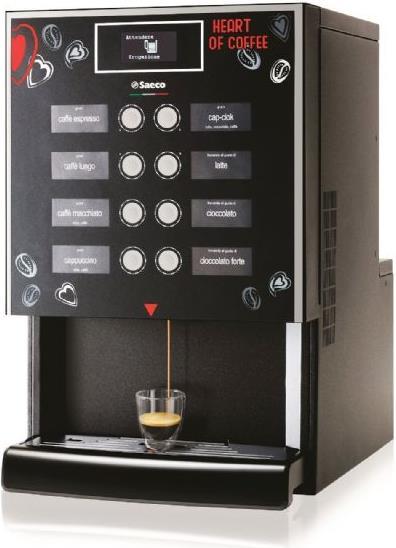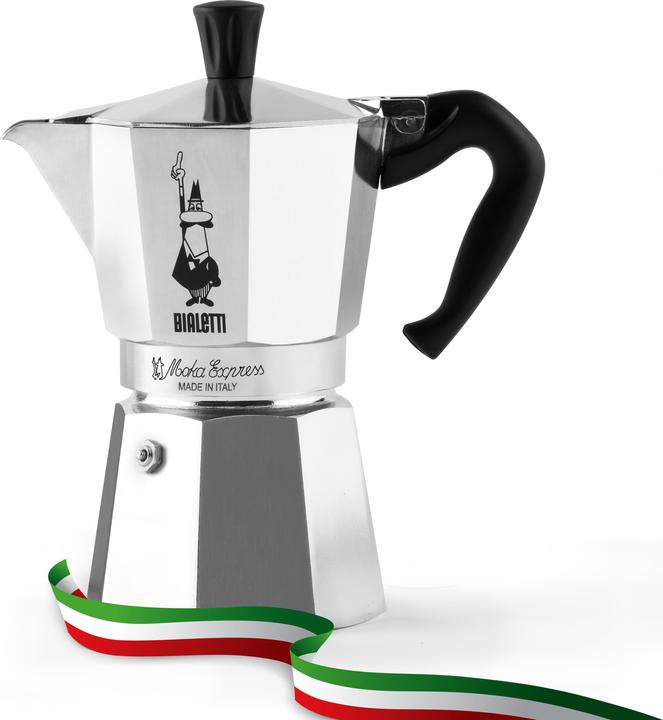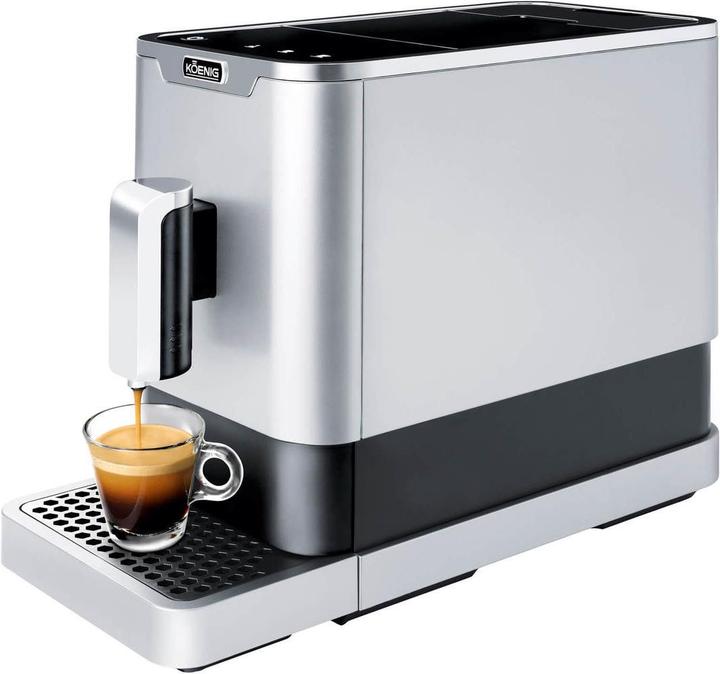
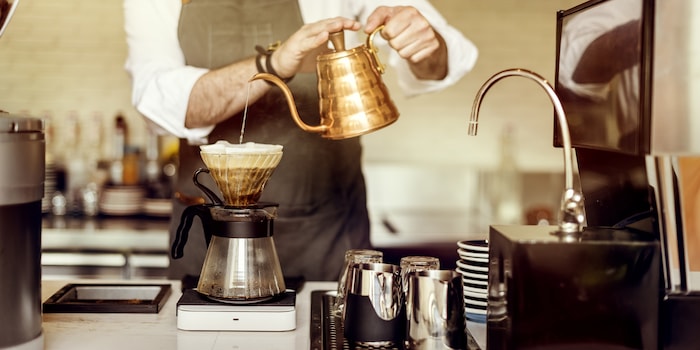
5 ways to brew coffee: how to pick the right coffee maker
Coffee, the world’s much-loved drink, is as unique as the ways you can make it. With portafilter coffee makers, also known as espresso machines, automatic coffee machines, moka stove-top pots and filter coffee makers, there are plenty to choose from. To help you pick the right one, I’ve listed the key advantages of each coffee maker.
Automatic coffee machines
When Saeco invented the first automatic coffee machine in 1985, the nifty devices gradually found their way into most Swiss homes. These days automatic coffee machines are more modern in terms of appearance and functionality than back in the day. For example, you can now get machines that work via an app, that have a touchscreen and serve up a variety of milky coffee options at the touch of a button.
There are even «professional» coffee machines for the office designed with longer coffee orders in mind. This means they feature larger water tanks and coffee grounds containers.
Suitable for: people who drink a lot of coffee and like a good selection of different types of coffee at the touch of a button
Advantages
- Aroma: the beans are freshly ground and the brewing pressure is quite high
- Lots of coffee drinks to choose from – all at the touch of a button
- Cheaper to buy coffee beans than it is to buy coffee capsules or pads
- Comes with a handy cleaning and care setting
- Quick
Automatic coffee machines for the home
See all automatic coffee machines
Automatic coffee machines for the office
Capsule coffee machines
Compared with other coffee makers, capsule coffee machines are still relatively new to the market. Capsule machines, like those using coffee pads, are part of the single-serve category. They’re true to their name in that they run on capsules and emit that dark, rich, caffeinated goodness when you press a button.
There are different categories within the capsules themselves. In other words, various systems and coffee types. It’s worth bearing in mind that the different capsule systems and limited number of capsules on the market mean your coffee choice is somewhat limited.
Suitable for: moderate coffee drinkers who want a machine that is easy to use and doesn’t need much maintenance
Advantages
- From capsule to cup quickly
- Compact
- Makes tea as well as coffee
- The coffee is sealed for flavour
- Different flavours of espresso capsules available
- Ground espresso is vacuum-packed so it lasts longer and stays fresh
- Incredibly easy to use
- Different capsules available for cappuccino and latte macchiato
- Easy to clean as the coffee brews in the capsule
- Cheap to buy

Krups Nespresso Essenza Mini
NESPRESSO Original
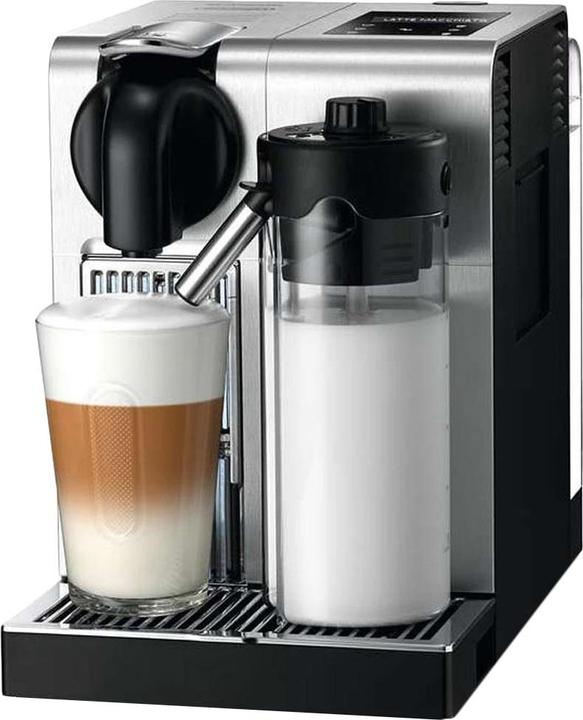

Portafilter coffee makers (espresso machines)
In portafilter coffee makers, also known as espresso machines, the portafilter is the bit that contains the coffee grounds and attaches to the machine via the group head. Before putting the coffee in the portafilter, it’s best to grind it into a powder first.
Once the machine is on, the water pushes through the ground coffee at high pressure. That’s what produces that much-coveted coffee. As the hot water only briefly comes into contact with the powder, the coffee doesn’t taste too bitter. Granted, automatic coffee machines do the same thing, but the difference is portafilters do it a bit better.
Premium machines serve up very good coffee as long as the coffee grind is also high quality. Portafilter coffee makers or espresso machines are particularly good for coffee specialists.
Something to bear in mind is these machines need a bit longer to heat up and the process requires a lot of love. Our editor Phil is a self-confessed coffee snob. But he’s one that doesn’t like to waste time in the mornings so he added a timer to his coffee machine. Read all about it here.
Suitable for: coffee connoisseurs who look for quality and taste
Advantages
- Price per coffee is still reasonable – depending on the bean you buy
- Unique coffee taste
- Real crema
- Portafilter is easy to clean
- You can experiment with traditional espresso bean varieties
- Cheap to maintain
Filter coffee makers
The pour-over technique behind filter coffee is simple and used in manual and machine filter coffee. In both cases, hot water is poured over the coffee grounds in the paper filter. The water and coffee that comes with it then drip into the jug placed under the paper filter. The process isn’t any more exciting in filter coffee machines. The only difference being it’s automated.
Here’s a rundown on the machine filter coffee process: you pour filtered water into the water container and switch the machine on. Water then flows through a tube from the container and past a heating element, which brings it to the boil. Afterwards, the heated water travels through the outlet to the filter, where it runs through the coffee grounds in the paper filter and brews the coffee. Finally, the caffeinated drink drips into the coffee pot below.
Suitable for: cost-conscious coffee drinkers who like to make a lot of coffee in one go
Advantages
- Easy to use
- Lets you measure out individually
- You only need to brew it once to get a pot full of coffee
- No lengthy cleaning or hanging around for your coffee
- Cheap to buy
Filter coffee makers
Pour-over coffee makers
Moka pots (aka stove-top coffee pots)
Moka pots are sometimes called espresso pots. But, confusingly, they don’t make espressos. This is because you only get real espresso under high pressure in a portafilter at about 9 bar. For comparison, a little stove-top pot will only reach 1.5 bar.
This means you can’t use moka pots for traditional espresso drinks like cappuccinos, latte macchiatos or lattes. But from my own experience, I can tell you moka pot coffee tastes great with a splash of milk. In case you’re wondering, this combination is called caffè misto.
Here’s how moka pots work:
You fill the lower part of the pot with water, put the sieve on top and then fill this with not too finely ground coffee. Then place the upper piece on top and screw it on well. Put the moka pot on a hot stove. The pressure from the heat pushes the water upwards and through the coffee grounds until it reaches the upper part that was empty at the beginning. Once all the water has transferred from the lower part to the top, your coffee is ready.
Suitable for: people who 1. don’t drink much coffee but when they do, they want it to be good coffee 2. people who don’t have much space in the kitchen
Advantages
- Moka pots are light, especially the ones made of aluminium
- Cheap to buy
- Easy to clean and you get to grips with them quickly
- They fill your kitchen with a lovely coffee aroma
- Given their size and weight, moka pots are also suitable for camping trips
Which coffee machine is right for you?
If all you want to drink is filter coffee, you obviously don’t need an automatic coffee machine. On the other hand, if you want to sample an array of different coffees, you’ll never manage this with a filter coffee machine.
If you’re a coffee connoisseurs, you should definitely be looking at a high quality portafilter coffee maker, aka espresso machine. However, the size and price of these beasts is usually the reason a lot of people opt for an automatic coffee machine instead.
Which machine to pick really depends on your coffee drinking habits. If you only have a cup of coffee now and again, a capsule coffee machine is probably your best bet. They are admittedly expensive to run per capsule but they give you coffee quick and with consistent quality.
Taking myself as an example, I only use a small moka pot. Why? Because I hardly drink any coffee at home. The pot is more there for when I have visitors round.
So when it comes down to it, there really is no single «best coffee machine». It always depends on what is important for you, how often you think you’ll use your coffee machine and how deep you’re willing to dig into your pocket.
Friends, family, cats and good wine are my lifeblood.
